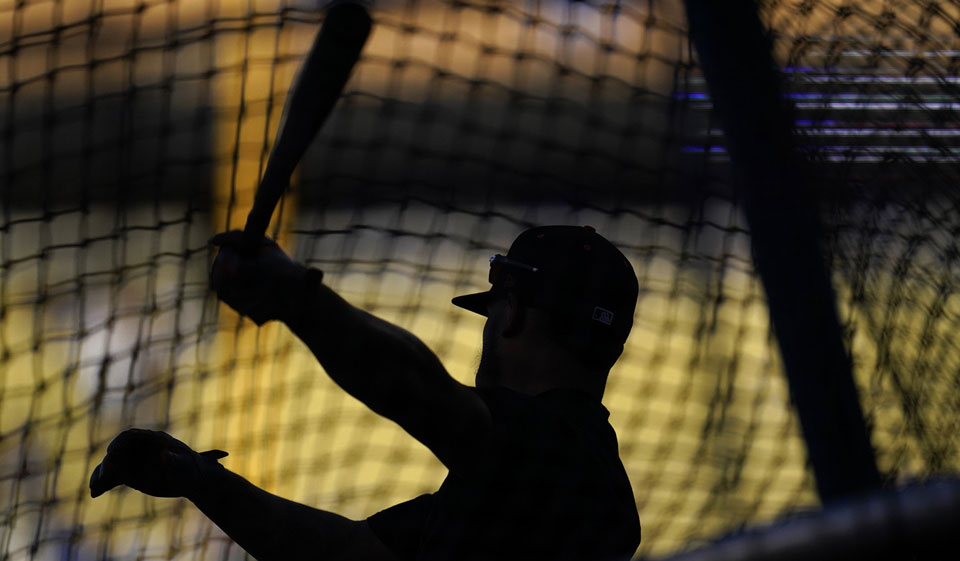
NEW YORK—With bargaining having broken down, major league baseball’s 30 owners are preparing to lock out their players, again.
And this time Sonia Sotomayor can’t step in to save them from their own folly. She’s busy with other matters, as a U.S. Supreme Court justice—especially on lockout day, Dec. 1.
Because that day the justices heard oral arguments on Mississippi’s direct attempt, through a new law banning abortions after 15 weeks of pregnancy, to overturn the 1973 Roe v Wade ruling and its successors, all of which uphold a woman’s right to reproductive choice.
But back to baseball.
The sport has had three prior lockouts and one forced strike, in August 1994. The owners attempted to break the players and restore the old system where they had virtually complete power over movement and pay. Their attempt failed, spectacularly. But it also forced the cancellation of the rest of that season and the World Series.
“I don’t think ’94 worked out too great for anybody,” Baseball Commissioner Rob Manfred, whom the owners hire and pay, said at a press conference after owners’ meetings two weeks ago.
That struggle continued into early 1995. It ended only after Sotomayor, then a rookie federal district judge in Manhattan, and a lifelong New York Yankees fan, issued an injunction against the owners for breaking labor law. That forced them back to bargaining with the Major League Baseball Players Association.
The two sides settled, but spring training was shortened and the season started late, shortened to 144 games.
“Bottom line: A lockout means the sport is on hold across all fronts until further notice. ‘Further notice’ in this instance almost certainly means when a new CBA is agreed to in principle,” CBS Sports reported several days ago.
This time, the collective bargaining agreement between the two sides expires at 11:59 pm on Dec. 1, and talks have broken down, news reports say.
The bosses and the workers, also known as the owners and the players, are far apart on basic economics, news reports add. At least one report adds the owners plan to impose the lockout to gain leverage over the players in the talks and to try to divide the union.
The Players Association doesn’t like methods the owners have used to manipulate pay and lessen competition for players’ services. One is a “luxury tax” on big-spending teams: Think the Yankees, Dodgers, Angels, and Red Sox. It says if their total payrolls go over a certain figure, they must pay extra into a central fund whose proceeds are then redistributed to other teams in smaller markets with smaller payrolls. The extra money is supposed to help those teams—think Pittsburgh and Kansas City—compete for talent.
An analogy would be if Amazon, the largest and most-profitable warehouse and delivery firm (because it exploits its workers) would be forced to redistribute some of its profits to its competitors, such as UPS. Amazon is non-union. UPS is organized with the Teamsters. Such redistribution would help UPS compete, by offering its workers more money.
The luxury tax restricts players’ choices because it lessens competition for their services. Owners don’t want to go over the luxury tax threshold. It also means many established stars in their early and mid-30s suddenly find, when their individual contracts expire, that no other club will sign them, except at greatly reduced pay. The result: Average salary has declined since the last CBA was signed in 2016.
Another is keeping a major league-ready young player in the minors for the first several months of each season to deprive the player of service time he later needs to increase his chances of getting a better paycheck through arbitration.
In general, a player with at least three years of major league service may seek impartial arbitration if his agent and the bosses can’t agree on pay. With some exceptions (called “Super Twos”), players with fewer than three years are stuck with what the owners decide to pay them.
Then players can go through arbitration until after year six, when they can be free agents, selling their talents to the highest bidder.
So owners keep those talented players in the minors at the start of what would be their first full season, thus pushing club control over the player’s pay for an extra year. That’s what the Washington Nationals, to take one example, did to Bryce Harper in what would have been his first full year. They kept him in the minors until mid-May. Voila: Three years of team control of Harper’s pay, not two.
There are other issues that irk the MLBPA, including the deliberate “tanking” by some clubs to accumulate chances to grab the most talented high school and college players in succeeding seasons.
Several years before the Houston Astros got caught cheating their way through 2017 and 2018, they tanked and wound up with a very talented team.
All of this tension is leading to another lockout. But this time, there will be no Sonia Sotomayor to force the owners to play ball at the bargaining table.










